Cuttin’ the ‘Gras, Then and Now
- By Rich Turner
- Photographs by Rich Turner
- 6 Comments

What’s your first experience with asparagus? Here’s mine: Disenchantingly gray-green, lifelessly limp and nothing like its picture on the can’s label. As a child I didn’t like asparagus. It simply did not appeal to my young self even though I was one of those kids. You know, they’re the ones, the minority, who actually liked spinach, broccoli, brussels sprouts, and the like. Asparagus, though? NO WAY. Well, it was the canned variety; I don’t remember ever seeing the fresh version in my small-town grocery stores in the 1950’s. But I didn’t grow up on the edge of the California Delta, either, where, for many decades, asparagus was one of the king crops and anxiously anticipated every spring by locals as well as the rest of the world.
Fast forward to the Mid-seventies when I moved to Stockton.
As my first spring-time in my new city grew closer, I noticed people talking about the coming asparagus season like they were talking about the beginning of baseball season or something. No, they were wondering which local stores would have the freshest spears of locally grown ‘gras – the locals called it ‘gras.
Of course, I’m wrinkling my nose and wondering what what the big deal is. Why the buzz about that slender, limp vegetable that my childhood self just would not eat? I don’t remember the exact occasion of my first taste of fresh-from-the-farm asparagus but I do remember it was simply steamed al dente and unadorned save for a pat of butter melting over it. I was smug in the knowledge that, even though this did not look like the scary stuff I remembered, I would not enjoy it. Boy was I wrong. Now I get it, that eagerness of looking forward to seeing the first batches in the local produce aisles – better yet, buy it fresh from the local packing sheds – and having it readily available for a couple of months or so.
A few years into my photojournalist job at The Record (Stockton Record then), in April of 1978, I catch an interesting assignment. Staff writer Dick Clever was doing a story called, “The Old Timers”, about a group of Filipino ‘gras cutters, some well into their seventies, who had worked together for decades.
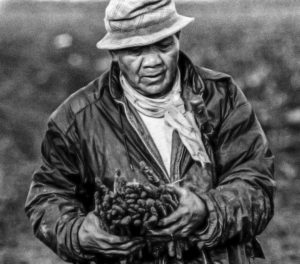
In the pre-dawn overcast darkness of Robert’s Island west of Stockton, The Old Timers gather in a farmhouse for a hot breakfast before heading out to the fields. As the light in the east attempted to pierce the threatening sky, the cutting began. Barely able to see anything against the moist-black peat soil, I wondered how the men could not only work in those conditions but work at such a quick a pace that I found it difficult to keep up with them even though many were twice my age or more.
Adding to my misery, I was gaining height and weight with almost every step. It had rained a bit overnight causing the thick goo to stick to the boot soles. I got taller and heavier, too, needing to periodically scrape off heavy layers in order to continue.
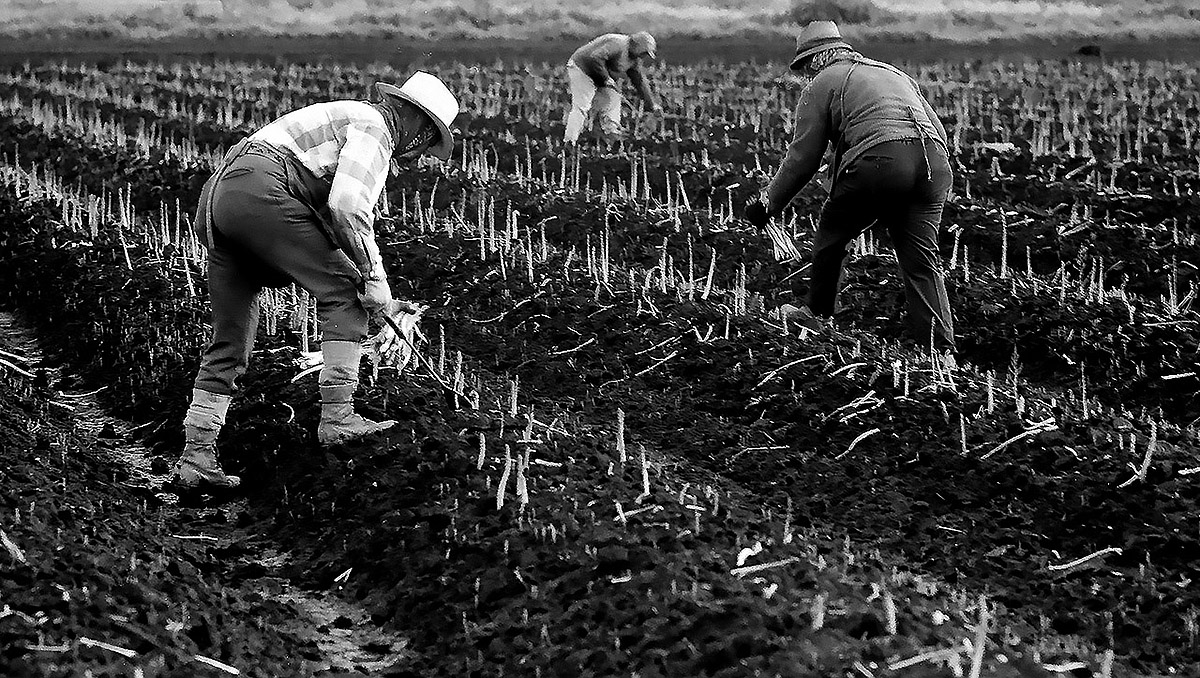
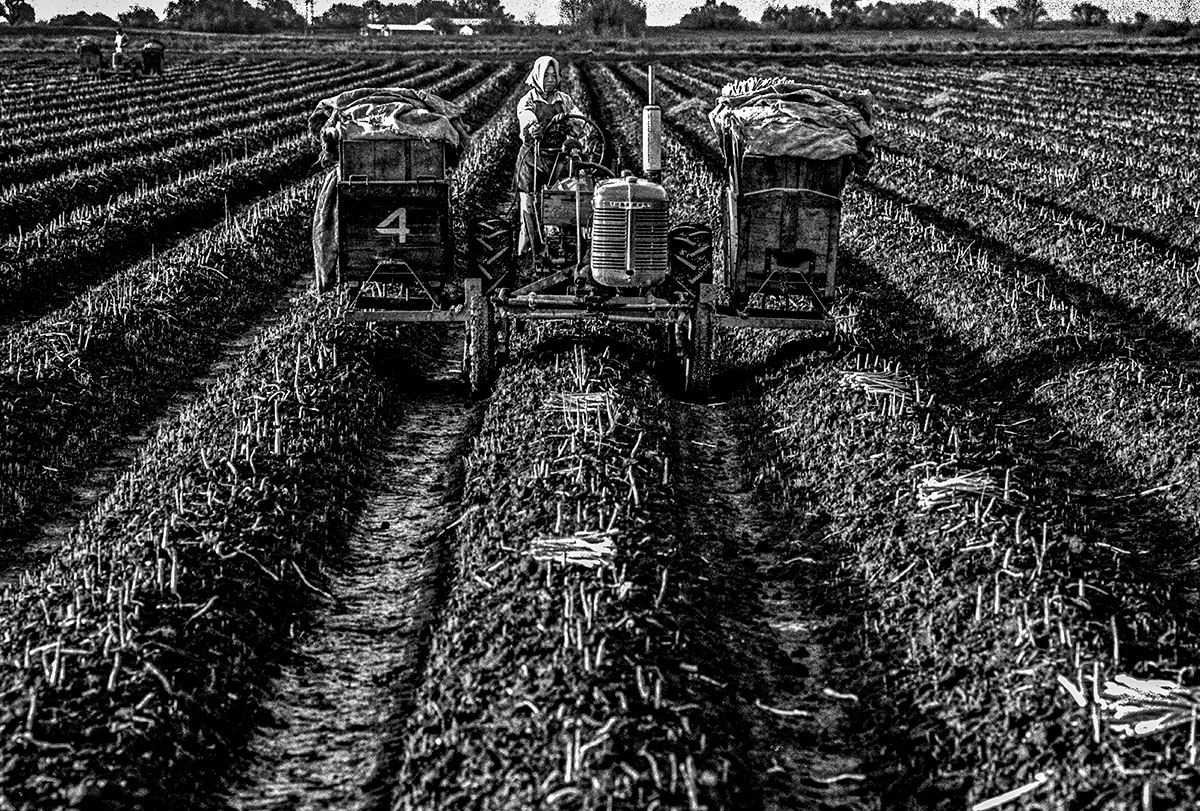
That was then, this is now.
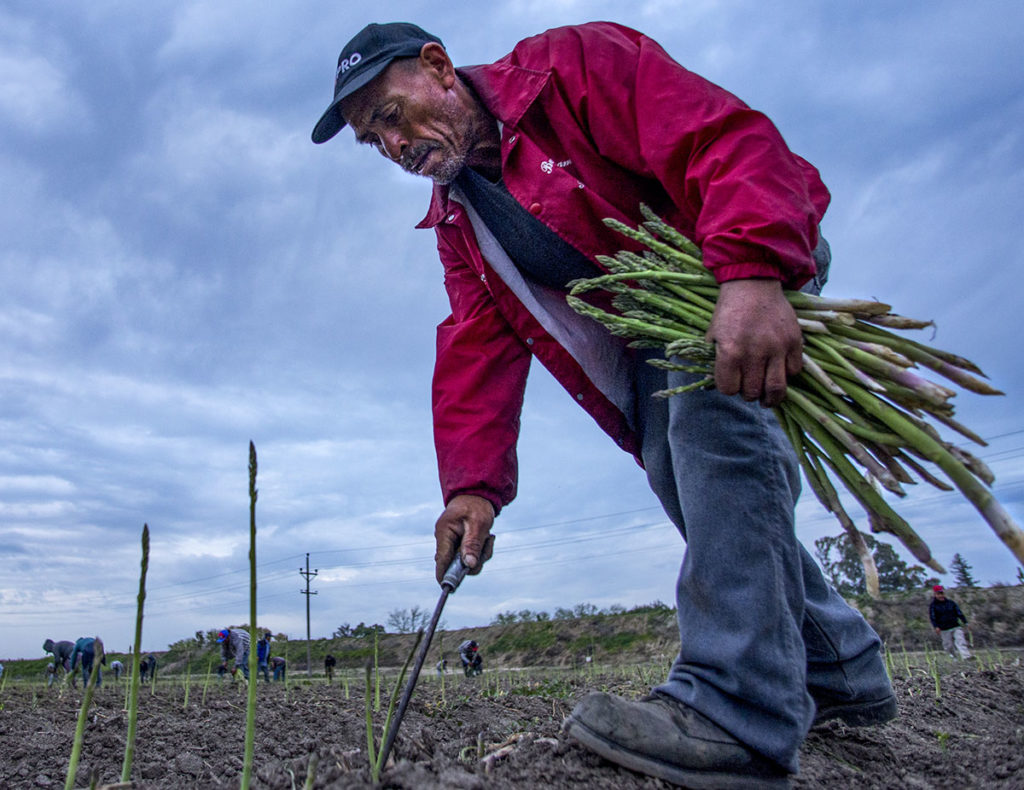
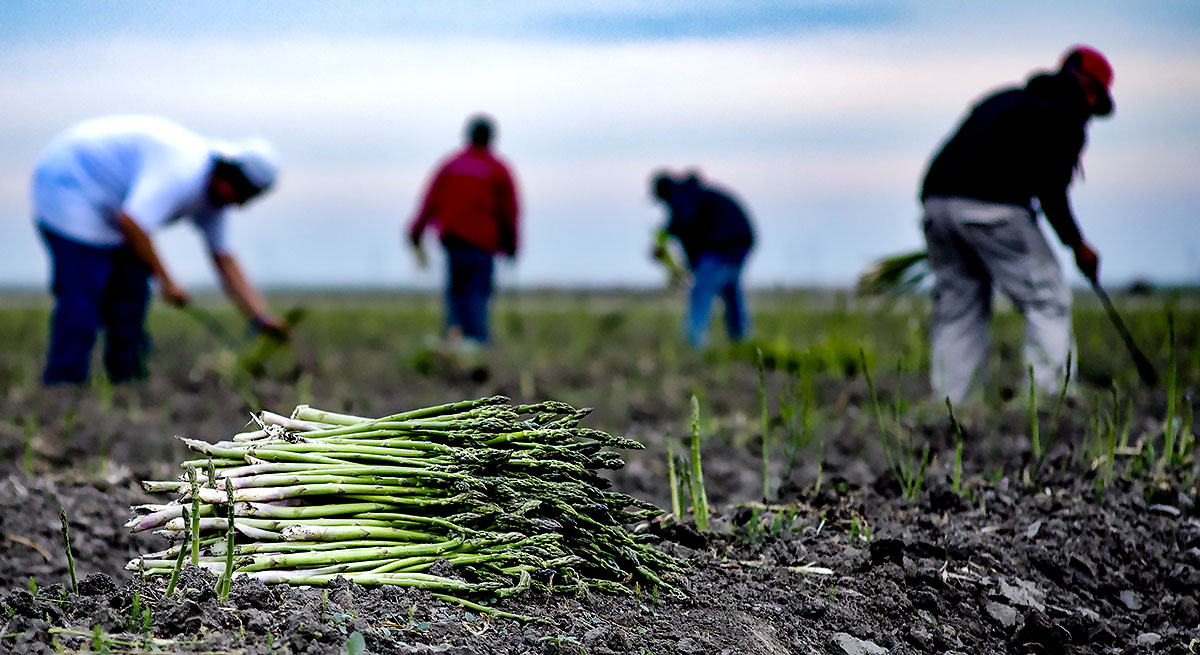
In recalling my challenging day in the fields back in 1978 I decided to see what, if anything, has changed in the years since and get a few pictures.
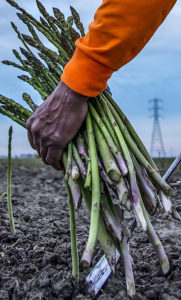
What hasn’t changed is the fact that this fragile crop can still only be hand-harvested. It takes experienced workers to select which spears to cut and all the steps from field, to sorting and to packing are done by hand.
What has changed isn’t good. Bob Ferguson, a Delta asparagus grower who allowed me access to his fields for photographs during the 2017 harvest, tells me that some mechanical harvesters are in development but they still are a long way from perfection and they are prohibitively expensive. “California agriculture continues to flex and adapt to the new challenges confronting the industry. The asparagus industry has had to do the same but with a scalpel knife. In just the last two years the number of acres in California has substantial decreased while our foreign competitors continue to increase their production. You simply don’t farm to just brake even or lose dollars and 2017 was an indicator as to where the industry was going; in 2018 we felt the full impact. We could no longer compete with the foreign competitors because their costs were a quarter to a third of our costs. And when your buyer is not willing to pay more for California asparagus because he can buy it cheaper outside the country for a better profit, why buy local?”
Asked what has taken the place of the historical crop that was first cultivated in the California Delta back in the 1890’s, Christen replies, “Processor tomatoes, grapes, and almonds.”
With a high degree of certainty we can expect our national pastime to return every spring. Unfortunately the future of California Delta grown asparagus is decidedly less of a sure thing.
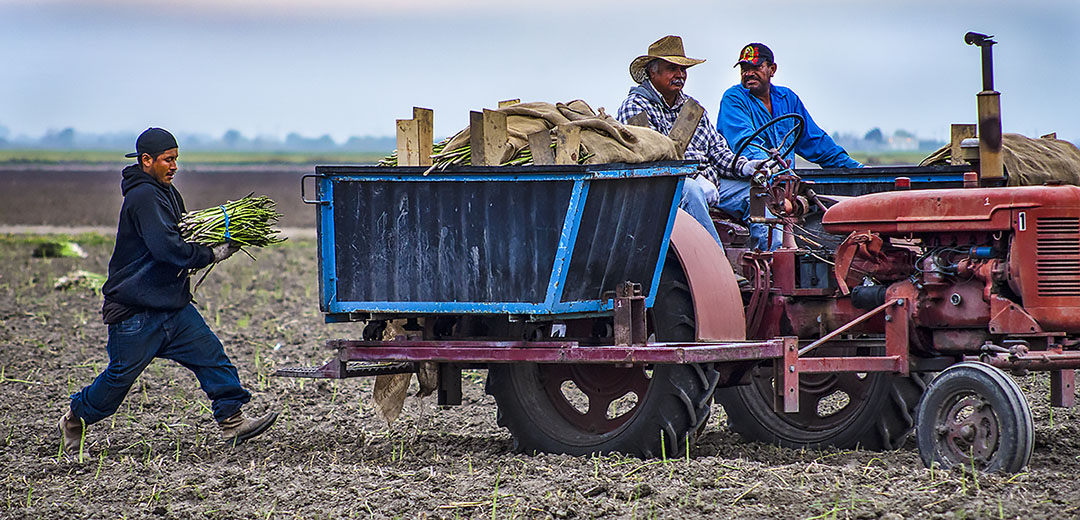
Final thoughts:
This story opened my eyes to a few things: From seed to the first full harvest, asparagus is in the ground for 3 years. The crop is a very labor intensive as no fool-proof methods have yet been devised for mechanical harvesting of the fragile spears. Asparagus can grow as much as 4 to 5 inches a day, meaning the same fields can be harvested every couple of days for 8 to 10 weeks. About 70% of the cost of asparagus production is labor.
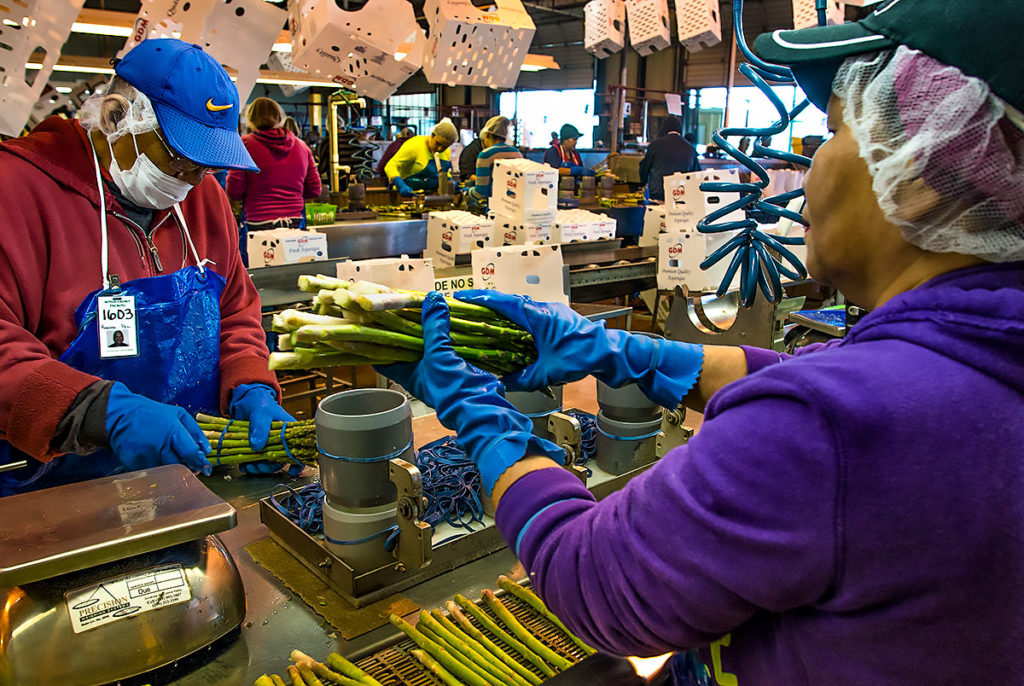
See Related Story, “Asparagus: Historic Signature Crop of the Delta” by David Stuart.
Award-winning photographer, Rich Turner, explored, photographed, and aerial photo-mapped Antarctica as a Navy photographer, was a newspaper photojournalist for 19 years, and has operated his own fine art photography studio since 1990. “Delta Grandeur,” his traveling exhibit, toured California museums and libraries for 5 years. His most recent passion is spreading the word far and wide about what an amazing place the Delta and Greater Bay Area is. With the help of very talented writers, artists and photographers, publishing this magazine seems a good way to do that.
- By Rich Turner
- Photographs By: Rich Turner
- 6 Comments

Leave a Reply
6 Comments
Nice write up. Takes me back to the days when our family raised and packed asparagus. It really was one if the beat crops I enjoyed producing snd working in. So much respect for the original Phillapino workers that came here and knew how to cut grass exactly the way it needed to be. Those days are gone but not forgotten. How I would love to be in the asparagus growing business again. A labor of love. Thanks for sharing that piece.
Great article! My family had property in the delta that was leased out. Dad would go down to the farm which was about 60 miles away and bring home a lug box. The asparagus was very sandy and never put in the fridge. It got pretty bad at the bottom but still good. One time we took a picnic with friends and we picked asparagus. Oh my, that was hard and helped me understand how much work went into our asparagus.
Hard work, indeed! Spending almost a full day with the cutters back in 1978 and again in 2017 convinced me and when local ‘gras is available locally, no matter the price, I snap it up.
Great story, photos and information and upsetting to me as to what has happened to this crop and the farmers…agriculture was once Californias largest industry…we even had bumper stickers Agriculture, Californias Largest Industry….not so today…saddens me and many others that remember and owned/worked in the fields and orchards…oh my…
Agreed, Rosalie. I was talking to a former asparagus grower recently and he told me that not only asparagus is being hit hard. The entire business model of small to medium farms is over regulated to a level making it difficult all the way around.